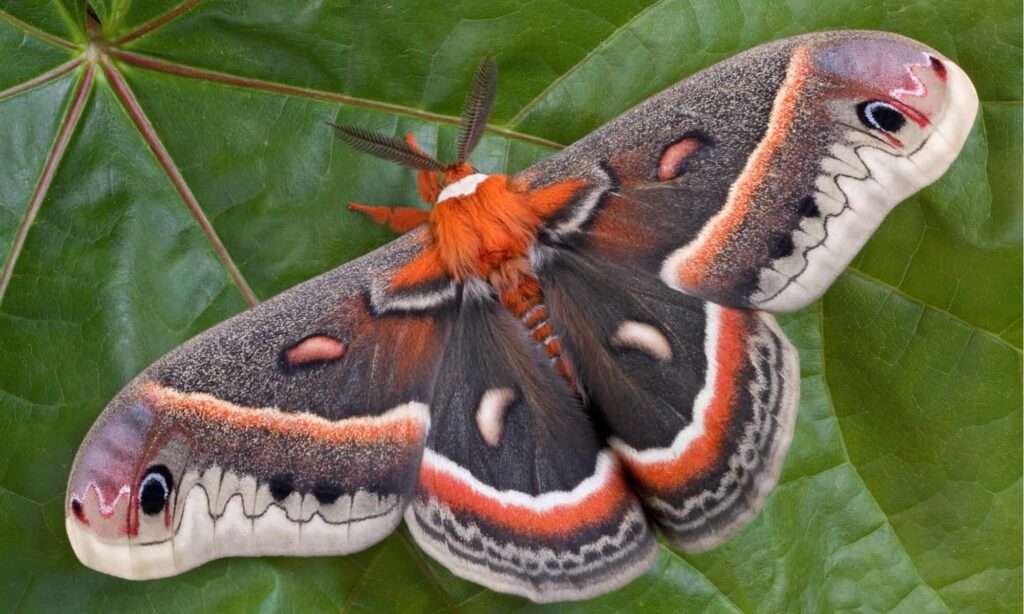
Description
Scientific Name: Hyalophora cecropia
The largest native moth in North America is called a Hyalophora cecropia, or cecropia moth. It belongs to the Saturniidae family of enormous silk moths. Beautiful silk moths with reddish bodies and black to brown wings bordered by white, red, and tan bands are called cecropia moths. The cecropia moth, which can reach a wingspan of five to seven inches (13 to 18 centimetres), is the biggest moth to be found in North America.
Habitat
These moths are widespread over North America, spreading as far west as Washington and as far north as most of the provinces of Canada. The cecropia moth larvae can be found on many different types of trees, although they are most frequently seen on maple trees.

Diet
Throughout the summer, caterpillars eat leaves. The mature moths consume no food at all.
Life Cycle
Early in the morning is when mating usually starts, and it lasts until evening. On a leaf of a tree or shrub, the female cecropia moth lays rows of eggs. The caterpillars start consuming the leaves of the host tree or shrub around 10 to 14 days after the eggs hatch. The crescent-shaped cecropia cocoon is fastened to a tree branch. Each year, one generation of cecropia is born.
As Pet
Feed the caterpillars the same type of leaves they were first feeding on. If given a new variety of leaves, caterpillars might die.
Daily add fresh leaves.
Remove the debris (Excrement).
Make sure to separate the caterpillars as they get bigger because otherwise they’ll start eating each other. Give huge caterpillars sticks to rest on as they transition from one instar to another.
The fluid that caterpillars emit is dark before they form a cocoon. As they prepare to spin, do not let them lie in this fluid.
Keep the caterpillars in a cool location once they have spun their cocoons. When they are developing a pupa inside the silken cocoon, do not disturb them.
Keep them in a cold place over winter. Protect them from animals that might consume the cocoons, like rats. (Container with screen).
The following May or June, moths will enclose. Give the moths a place to hang when their wings are fully extended.
Moth adults do not eat. They only survive long enough to mate, produce eggs, and then pass away. At night, release the adult moths.
Table





